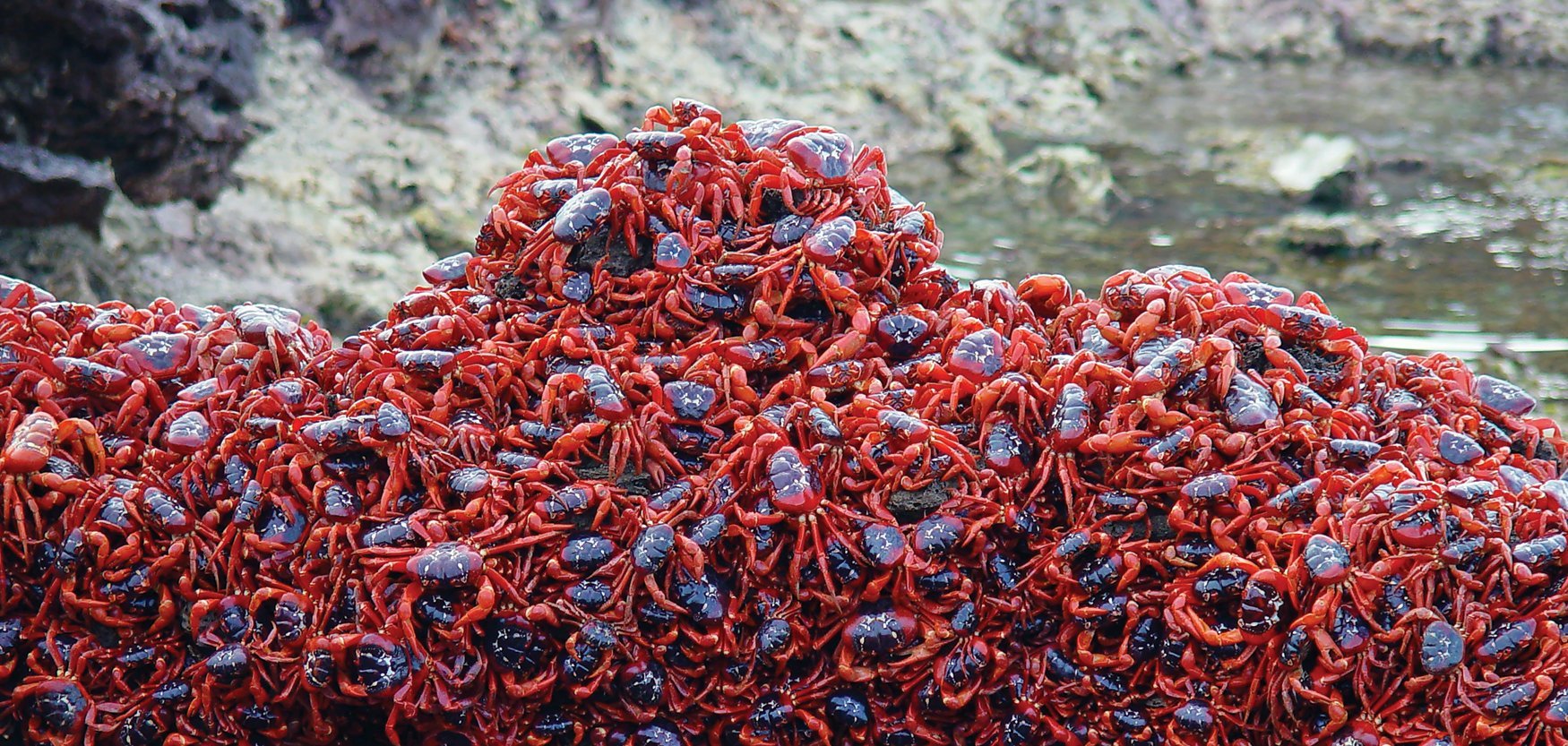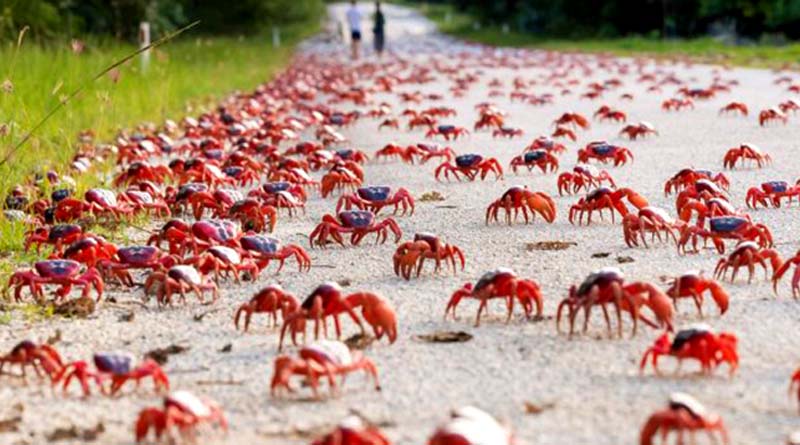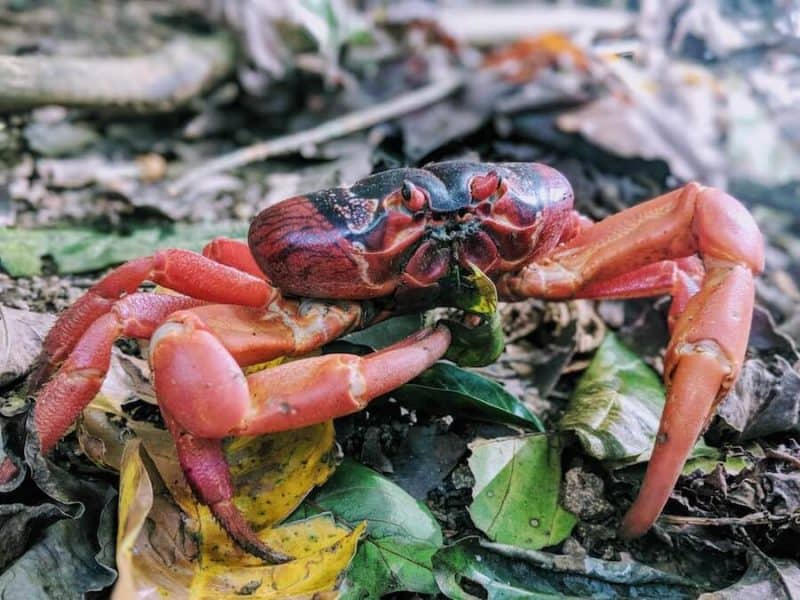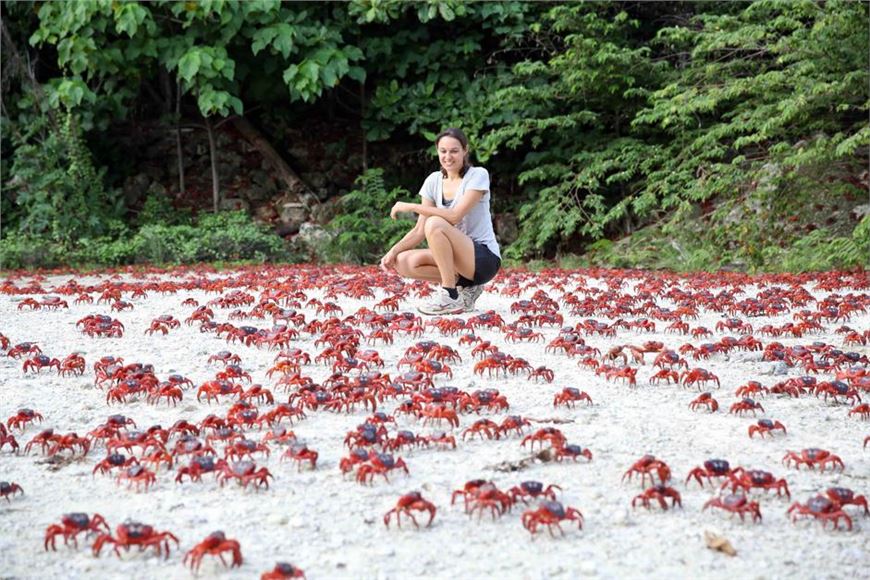Christmas Island Red Crab: An Extraordinary Annual Migration
Related Articles: Christmas Island Red Crab: An Extraordinary Annual Migration
- Christmas Images Download Free 2024: Capture The Festive Spirit With Stunning Visuals
- Christmas Images For Facebook Free 2024
- Christmas Island Red Crab Migration 2024: A Natural Spectacle Unfolding In Harmony
- Christmas Images Noel 2024: A Joyous Celebration Of The Festive Season
- Christmas Images Of Jesus And The Nativity: A Visual Exploration Of The Birth Of Christ
Introduction
With great pleasure, we will explore the intriguing topic related to Christmas Island Red Crab: An Extraordinary Annual Migration. Let’s weave interesting information and offer fresh perspectives to the readers.
Table of Content
Video about Christmas Island Red Crab: An Extraordinary Annual Migration
Christmas Island Red Crab: An Extraordinary Annual Migration

Introduction
Christmas Island, a small Australian territory located in the Indian Ocean, is renowned for its unique natural phenomena, including the spectacular annual migration of the Christmas Island red crab (Gecarcoidea natalis). This remarkable event, which typically occurs between October and December, sees millions of crimson-hued crabs embark on an arduous journey from the island’s rainforests to the ocean to breed.
Taxonomy and Distribution
The Christmas Island red crab belongs to the family Gecarcinidae, which includes land crabs known for their ability to survive in both terrestrial and aquatic environments. It is endemic to Christmas Island, meaning it is found nowhere else on Earth.
Physical Characteristics
Christmas Island red crabs are distinctive in appearance. They have a bright red exoskeleton, which may vary in shade from orange to deep crimson. Their carapace, the hard outer shell that covers their body, is oval-shaped and typically measures between 11 and 14 centimeters (4.3 to 5.5 inches) in length. They have long, slender legs and two large claws, one of which is slightly larger than the other.
Life Cycle and Behavior
Christmas Island red crabs have a complex life cycle that involves both terrestrial and marine phases. They spend most of their lives in the island’s rainforests, where they feed on decaying plant matter and other organic materials. During the dry season, they retreat to burrows to conserve water and energy.
As the wet season approaches, the crabs undergo a physiological transformation, triggered by environmental cues such as rainfall and changes in temperature. Their bodies begin to accumulate moisture and their reproductive organs develop. This signals the start of their annual migration to the ocean to breed.
Migration
The migration of the Christmas Island red crabs is a breathtaking spectacle. Millions of crabs emerge from the rainforests and converge on the island’s coastline. They travel in dense columns, often covering roads and paths, and even climbing over obstacles in their relentless pursuit of the ocean.
The journey can be treacherous, with crabs facing numerous hazards along the way. They must navigate steep slopes, cross busy roads, and avoid predators such as birds and feral cats. Despite these challenges, the crabs exhibit remarkable determination and resilience.
Breeding and Reproduction
Once the crabs reach the ocean, they gather in shallow waters near the shore. The males engage in elaborate courtship rituals, waving their claws and performing dances to attract females. Successful males mate with the females, who release their eggs into the water.
The fertilized eggs hatch into planktonic larvae, which drift in the ocean currents for several weeks before developing into juvenile crabs. These juvenile crabs eventually return to the island and settle in the rainforests, completing the life cycle.
Ecological Importance
The Christmas Island red crab plays a vital role in the island’s ecosystem. Their feeding activities help to decompose organic matter and recycle nutrients back into the soil, contributing to the health of the rainforest. They also serve as a food source for other animals, such as birds and reptiles.
Conservation Status
The Christmas Island red crab is listed as a vulnerable species by the International Union for Conservation of Nature (IUCN). Its population has declined in recent decades due to habitat loss, pollution, and introduced predators. Conservation efforts are underway to protect the species and its unique migration.
Tourism and Cultural Significance
The annual migration of the Christmas Island red crabs has become a popular tourist attraction. Visitors from around the world come to witness this extraordinary natural phenomenon. The island’s government has implemented measures to minimize the impact of tourism on the crabs, ensuring their long-term survival.
The red crab is also an important part of Christmas Island’s cultural heritage. The indigenous inhabitants of the island, the Minangkabaus, have a long history of interacting with the crabs and have developed a deep respect for their unique behavior.
Conclusion
The Christmas Island red crab is an iconic species that embodies the wonder and diversity of the natural world. Its annual migration is a testament to the resilience and adaptability of life on Earth. Through conservation efforts and sustainable tourism practices, we can ensure that future generations continue to marvel at this extraordinary spectacle.








Closure
Thus, we hope this article has provided valuable insights into Christmas Island Red Crab: An Extraordinary Annual Migration. We thank you for taking the time to read this article. See you in our next article!
